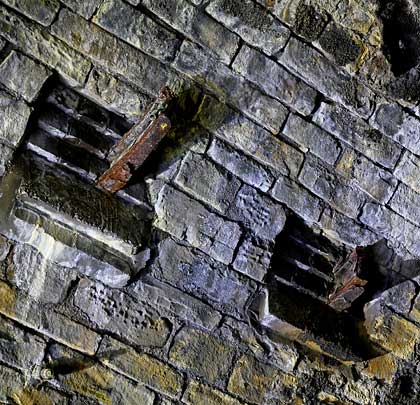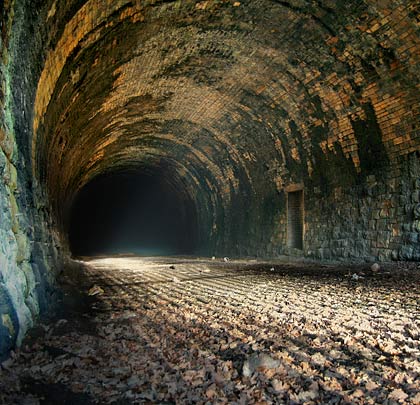Silkstone tunnels
Silkstone tunnels






















The South Yorkshire Railway & River Dun Navigation extended its Worsborough Colliery branch through to Moor End pit at Silkstone in 1852.
22 years later, the line was taken over by the Manchester Sheffield & Lincolnshire Railway which then set about connecting it to the company’s main line at West Silkstone Junction. This link opened on 2nd August 1880 and required two tunnels – Silkstone No.1 was the longer at 289 yards whilst, to its east, No.2 was just 74 yards.
They sat near the summit of the notorious Worsborough incline which involved trains labouring up a 1:40 gradient for 3½ miles – this would demand up to four locos including one or two bankers. Even then, heavily laden coal trains would often have slowed to a crawl before reaching the top. Fulfilling the banking role between 1925 and 1955 was a LNER Class U1 – a solitary 2-8-0+0-8-2 Beyer-Garratt locomotive, built specifically for that purpose. It was both the longest and the most powerful steam engine ever to run in Britain, featuring a motion at each end. As a result of the climb, the tunnels were particularly poor for air quality so the Garratt’s footplate crew trialled a respirator kit which took air from close to rail level.
The tunnels are separated by a deep cutting of around 150 yards in length. A curve to the south of 20 chains radius begins at the eastern end of No.1, extending through No.2. Lined entirely in stone, signalling cables were hung from the Up-side (north) wall whilst a troughing route was provided at the foot of the other. Only the longer No.1 tunnel was fitted with refuges for anyone working within it.
After the Second World War, the Woodhead route – including the line through the tunnels – was prepared for electrification. This involved cutting small holes in the lining to house supporting structures for the overhead equipment. The remains of three such structures are to be found in No.2 tunnel.
The line from West Silkstone Junction was officially taken out of use on 20th July 1981, coinciding with Woodhead’s closure. The trackbed was used as an unofficial footpath for some years thereafter and played a small part in a major crime: in January 1992, Michael Sams made his escape on a moped through the tunnels after collecting a ransom for the release of estate agent Stephanie Slater, whom he had kidnapped.
Since then, following mining subsidence, the east portal of No.1 tunnel has been buried and the other end fenced off, blocking the way. The Trans Pennine Trail, which occupies part of the trackbed, runs above ground to the east side of the tunnels.








